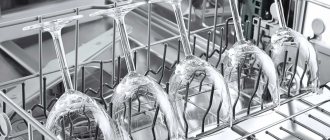Home / Boilers
Back
Published: November 23, 2019
Reading time: 3 min
3
5934
Owners of water heating boilers quite often come across information about the magnesium anode, but, as a rule, only a few know what the anode for the boiler looks like and what role it plays.
In short, it can be noted that the primary task of a magnesium electrode is considered to be anti-corrosion protection of the internal surfaces of the tank.
Dismantled anode. Photo source: tehnika.expert
- 1 Purpose of a magnesium anode for a water heater
- 2 Operating principle
- 3 Types of anodes 3.1 Magnesium
- 3.2 Titanium
- 3.3 Aluminum
What is an anode for a water heater
To understand what an anode is and how this part works, it is necessary to imagine the electrochemical processes that occur inside the boiler. In an aqueous environment, the magnesium rod becomes a positive (corrodable) element, and the walls of the heater container become negative.
Purpose of the anode for a water heater
What is an anode for?
- active protection of the tank from corrosion;
- prevention of cracking of the enamel coating;
- increasing the service life of equipment (heating elements, boiler tank walls);
- loosening the layer of scale that settles during operation of the heater;
Anode rod design
A standard water heater anode is a threaded rod coated with a layer of magnesium alloy. The thickness of the coating is about 10 mm. The most common anode material is AZ63 alloy. Analogues of this tread alloy are N-1, MP-1 and MP-2. Magnesium is applied by casting into a chill mold.
The magnesium anode is made of a rod, inside of which there is a threaded steel pin.
Anode designs for different boiler models differ in the length and diameter of the rod itself, as well as the parameters of the pin, which is used to secure the part inside the tank.
Some modern models of water heaters are equipped with flexible plastic rods filled with magnesium granules.
This design facilitates installation and allows you to restore the functions of the anode by adding granules.
How does a magnesium anode rod work?
In the absence of an anode, galvanic couples are formed inside a metal container with water, which lead to the gradual destruction of the walls. If you place a part made of a more active material than iron into this system, it will have a much higher potential for reaction. In this case, the anode will be an additional rod, and the cathode, on which cations of the active metal will be deposited, will be the walls of the boiler.
In addition to corrosion, scale is also a problem when servicing the device. A layer of carbonate salts settles not only on the walls of the container, but also on the element that heats the water. With continuously occurring electrolysis and the formation of magnesium salts, the scale becomes more porous, soft and loose, which makes it easy to clean it from the surface of the heating element and tank.
After a year of operation, corrosion is visible on the magnesium anode - oxides that gradually destroy the electrode.
Kinds
It is imperative to install a sacrificial anode for a boiler covered with ordinary metal. After all, such material without additional protection has a short service life. Even if the inside of the tanks is covered with a layer of stainless steel, this still will not save the water heater. Therefore, you need to buy additional parts so as not to spend money on repairs later. Any heater manufacturer puts forward its own recommendations on how to select the anode size. In principle, anodes can be divided into two types - magnesium and titanium.
Magnesium anode
The magnesium anode, as mentioned above, is made of an ordinary rod or, in other words, a rod, inside of which there is a threaded steel pin. The studs themselves can be of different diameters and different lengths. It is worth paying attention to this when buying a new anode, because if its size is many times larger, it will not fit into the hole in the tank. However, there are some designs where you can install even two anodes. In floor-standing gas or electric structures with a large volume, they are changed only from above.
The anode rod is very large, approximately one meter long. Therefore, replacing it will be problematic in rooms with low ceilings. Since the water heater itself has a height of up to two meters, plus a meter-long rod must also be inserted into it. For such purposes, multi-section protective magnesium anodes began to be produced.
Since development does not stand still, new products have recently appeared on the markets - flexible plastic anodes.
They are made from a plastic tube with micropores. Magnesium granules are poured inside this tube. The advantage of this new product is that there is no sediment left inside. In addition, magnesium can be added to the tube as it is produced. Magnesium powder is sold separately.
A high-quality aluminum water heater does not need such additions. But at the same time, the high price makes it inaccessible to ordinary people. But an ordinary boiler, supplemented with a magnesium anode, will be affordable for almost everyone. At the same time, it is no worse in functionality. The principle of its operation is that active magnesium atoms leave the anode and themselves produce oxide. The iron atoms remain completely intact.
Titanium anode
But a titanium-coated anode works on a slightly different principle. It is used as a measuring and supply electrode. In this case, the current is supplied by a voltage source located outside, and it is also regulated by external electrical control. After some time, the current stops flowing and then the titanium anode analyzes the condition of the internal parts of the structure. It identifies what kind of violation occurred during a given period and then with great accuracy regulates the possible feed force to restore the damage.
The titanium coated anode is not subject to destruction and therefore does not need to be replaced at all. It works throughout the entire service life of this structure. The greatest demand is for heaters for 50 liters of water, supplemented with such an anode. They are not only compact, but also easy to use. By the way, to make sure that the anode is really titanium, you can use a magnet. This material has a weak magnetic field, so it is not magnetic at all.
Aluminum
This is another version of the protective electrode, coated with aluminum coating. It is also made in the form of an ordinary threaded rod.
When water is heated, the metal expands and the alloy of the body lengthens, losing its characteristics. Microcracks form on the surface of the tank. After which the oxygen in the water begins to oxidize the metal, causing irreversible corrosion processes.
The steel body and the electric heating element create a galvanic couple, with the body becoming the anode. To prevent it from being destroyed under the influence of water, the manufacturers placed an alloy containing aluminum near the heating element.
It takes on the role of an anode - as a result of which all aggressive oxygen is consumed for its oxidation, and the container remains intact. The aluminum anode prevents the boiler elements from oxidizing, but it has a very sophisticated design and is easily damaged by mechanical shock.
What other types of anodes are there?
Aluminum and titanium anodes are also installed in water heaters. They may differ from magnesium in cost and configuration.
Titanium
The titanium anode is connected to a voltage source, so it does not corrode like magnesium. The part does not need to be replaced, since the tank is protected due to external current parameters.
The titanium anode is compact and easy to use.
When connecting a non-destructive electrode, the frequency of boiler maintenance increases to 1-1.5 years.
Aluminum
An aluminum anode has the same operating principle as a magnesium anode. Due to the lower activity, the protective effect extends to a smaller area of the base metal. To prevent corrosion of the entire tank, it is necessary to install an anode with a large length and protector thickness. Several aluminum electrodes are placed in large boilers and boilers at once.
The aluminum anode in a water heater typically lasts three to five years.
Prevention
To increase the period of scale formation on the heating element (and it will still form, the only question is the intensity), to extend the service life of the anode and the entire boiler, professionals recommend:
- install filters that will purify water from mineral impurities and soften it;
- heat the water in the boiler to a minimum comfortable temperature, do not always keep the regulator at maximum. Yes, to prevent “blooming” and fight bacteria, this will have to be done from time to time, but it makes no sense to constantly heat the water to the limit.
If you are just thinking about buying or replacing a boiler, give preference to a model with a dry heating element that does not need to be cleaned. The service life of water heaters with “dry” heating elements is significantly longer compared to wet boilers.
How to determine whether an element can be replaced
Boiler manufacturers recommend scheduled maintenance of the device once every 6-9 months. If deep potholes appear on the surface of the corroded rod or it has greatly decreased in size, then it needs to be replaced.
The average service life of the active electrode is 9-12 months.
It is recommended to replace the anode when more than 70% of the coating has been depleted. If there is no electrode, it is not recommended to turn on the heater. During scheduled maintenance, it is also recommended to thoroughly clean the surface of the heating element and tank from a layer of scale.
Regular cleaning of the boiler will ensure its long-term operation.
Signs of heating element contamination are:
- the appearance of a quiet hiss during operation;
- frequent turning on and off of the device;
- slow water heating.
How to extend the life of the anode
The service life of the anode depends on the specific use of the boiler, the hardness of the water and the quality of the alloy itself, which is used to protect the tank. To extend its service life, you need to:
- turn on the water heater in economy mode;
- install original anodes when servicing the device;
- use flow filters to purify water from carbonate salts, chlorine, dirt and other impurities.
For consultation and purchase of a filter, please contact.
It is important to note that the dissolution of the anode is a normal process. The corrosion that occurs is the main sign that the heating element and tank are protected from destruction. If the magnesium rod has significantly decreased in size or the boiler malfunctions, you need to clean the container and replace the anode.
If the anode is half worn out, it will need to be replaced soon.
Removing the element in the water heater
The magnesium electrode is a consumable item, so you need to check its condition regularly. To diagnose and replace a part you must:
- Turn off the boiler and close the valve.
- Drain the water through the tap or check valve.
- Disconnect the hoses and remove the casing from the bottom of the tank. In some heater models (for example, with a strip and a nut), the lower part can only be removed in an inverted position, so the device will have to be completely removed from the wall.
- Remove the boiler control unit and flange, having first taken a photo of the location of the wires. If the flange is secured with a 55 mm nut, then you need to carefully turn it counterclockwise using an adjustable or hub wrench.
- Get the heating element. A thick layer of deposits can lock it tightly into the groove, so it needs to be slightly rocked from side to side before dismantling.
- Remove the magnesium anode from the socket. Inspect its surface and measure the thickness of the residual active layer. If wear is more than 60-70%, replace the part with a new one.
- Reassemble the water heater in reverse order.
When servicing the boiler, it is necessary to clean the tank and heating element from scale.
Replacing the anode
Since the anode for the boiler is a consumable item, it needs to be periodically replaced. This procedure does not require significant time or special qualifications. To do this you will need:
- Buy this part at a store or service center.
- Remove the bottom cover of the tank.
- Remove the flange and thermal sensor, which will then become accessible.
- Remove the heating element by slightly stirring it. The resulting deposits may prevent its dismantling. This procedure should be performed carefully to avoid damaging the assembly.
- Remove the spent sacrificial anode.
- If the replacement has not been made for a long time, instead of the whole product, only its rod may be present. This is due to the complete destruction of the magnesium alloy layer.
- The heating element is cleaned and installed in place. If necessary, you can replace it.
- Install a new anode and assemble the water heater in reverse order.
Replacing the anode is not difficult. It is necessary to periodically clean the internal tank of the water heater from deposits and promptly replace the magnesium anode. This will ensure long-term operation of the boiler.
Myths about magnesium rod
The proliferation of boilers with anode protection has led to the emergence of many myths. The main subject of debate is its actual effectiveness in conditions of high water hardness and in a stainless tank.
Does it really help with scale?
Scale is formed from carbonate salts found in tap water. The concentration of these compounds determines its hardness. The presence of magnesium cannot affect this process, since an acidic environment is needed to dissolve scale.
However, the mixture of calcium and magnesium salts, which is formed during the electrolysis process, turns out to be looser than the scale that settles in the absence of an anode.
Do I need a stainless steel tank?
Stainless steels, which contain nickel and chromium, have increased corrosion resistance and do not rust even with constant contact with water and oxygen. In addition, the boiler walls are additionally protected with anti-corrosion paints and enamels.
Magnesium anode can be installed in stainless steel boilers.
However, magnesium anodes are also installed in stainless steel tanks. This is due to the following reasons:
- the composition of the alloy may be uneven, which leads to the formation of galvanic couples and pitting (pitting) corrosion;
- the boiler tank is not solid, but welded, and the joint is more easily destroyed;
- Due to the expansion of the metal during cyclic heating and cooling, the anti-corrosion coating gradually cracks.
Magnesium is much more active than steel of any composition, therefore, with an uneven distribution of alloying elements, stainless alloys do not form galvanic couples. The metal ions that are released during the reaction partially fill the cracks in the enamel, preventing the tank from coming into contact with water.
Is it harmful to health?
Magnesium carbonates do not cause harm or benefit to the health of people who use hot water for domestic purposes. Since the amount of these salts is insignificant, they have little effect on the level of water hardness.
Why is an anode needed in a water heater?
The main function of the anode is to protect the internal tank of the storage water heater from corrosion. They come in two types - magnesium (used in water heaters with a water-containing container made of enameled iron) and aluminum (used in water heaters with a water-containing container made of stainless steel).
Protective enamel, with constant heating and cooling during the expansion process, eventually becomes covered with small cracks through which water gets to the metal, after which the destruction of the metal is a matter of time.
Stainless steel is practically free from this problem, but welding points (seams) can still corrode.
The main factors influencing the tightness of the internal tank of the EWH are: intensity of operation and chemical composition of water. The service life is negatively affected by the presence of salts, impurities, and the richness of water in oxygen.
The operating principle of the anode is based on the galvanic interaction of conductors. Iron is less electronegative than magnesium or aluminum, so if there is an electrical bond, the former will not oxidize in the presence of the latter. In other words, the anode “pulls” oxygen ions onto itself, thereby protecting the walls of the internal tank.
The lifespan of this “defender” can vary from several months to a year, depending on operating conditions. That is, the frequency of anode replacement for each specific EWH needs to be determined individually. The manufacturer recommends carrying out the first maintenance three to four months after the start of operation of the device and, based on the data obtained, determining further frequency.
In the photo, the anode before and after a year of service:
At the same time, the anode facilitates the fight against scale, making it loose and less durable.
The main element that contaminates the surface of the heating element is calcium salts, most often carbonates.
An anode cannot protect against this process, but it does make it less problematic. When the anode interacts with carbonates, substitution occurs; as a result, magnesium salts are deposited on the heater, which have a loose and soft structure. They are very easy to remove mechanically, without the risk of damaging the heating element itself.
From all of the above, it becomes clear that the anode is a consumable material and during operation it gradually oxidizes itself, dissolving and collapsing. Therefore, it needs to be changed periodically. In a number of models (in particular, in water heaters with a water-containing container made of enameled iron), annual replacement of the anode is a necessary condition for maintaining the manufacturer’s warranty on the water heater.
To purchase an anode, follow the link (link to www.thermex-service.ru/product/anody/)
To order an anode replacement service, follow the link (link to www.thermex-service.ru/services/tekhnicheskoe-obsluzhivanie-vodonagrevateley/zamena-magnievogo-anoda-/)











